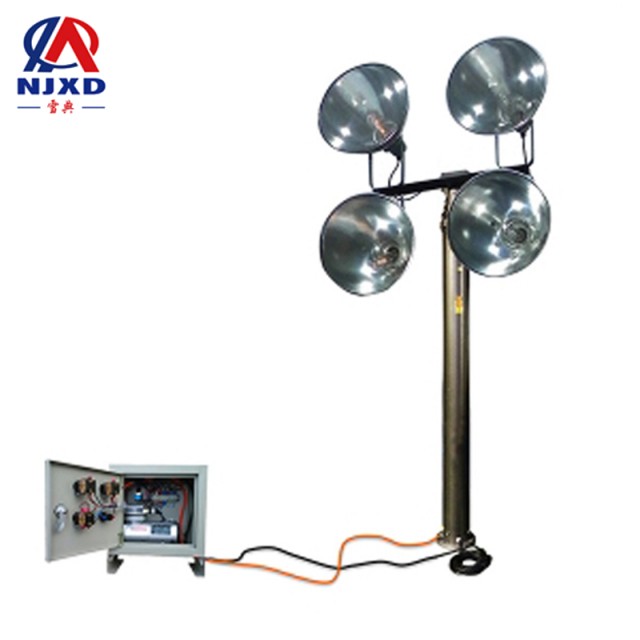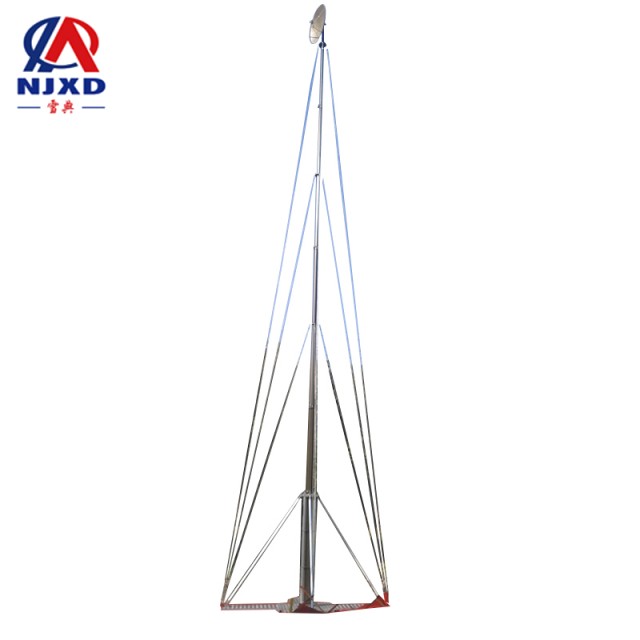NEWS
Digital microwave relay communication system for lifting communication equipment
Time:2021-06-29 View:

digital microwave relay communication system (digital microwave relay systems) is a multi-channel communication system that carries out long-distance transmission of digital signals in microwave relay mode, also known as digital microwave relay system.
Introduction
Digital microwave relay communication system is a multi-channel communication system that carries out long-distance transmission of digital signals in microwave relay mode, also known as digital microwave relay system. For analog signals such as telephones and faxes, analog signals must be converted into pulse code modulation (PCM) digital signals with a bit rate of 64kbit/s through sampling, quantization, coding, etc, it uses time division multiplexing (TDM) to form multiple signals into baseband signals, and then uses this baseband signal to perform secondary modulation on intermediate frequency carriers (such as phase shift keyed PSK), then it is moved to the microwave band through the up-converter. This system can be recorded as TDM PSK. Digital microwave system can be used to transmit telephone, data, image, television and other new communication services.
Features
Features of digital microwave relay communication system include:
① in the digital microwave relay system, the relay station can regenerate the received discrete digital signals to eliminate interference and noise accumulation during transmission, therefore, each relay station in the whole relay system needs to adopt baseband switching mode. ② for long-distance microwave relay communication, the cost per kilometer of digital system is lower than that of corresponding analog system. If digital transmission and digital exchange are considered again to form a comprehensive digital network, it can also save the analog/digital conversion device, which can save more costs. ③ the frequency spectrum utilization of Voice digital signals is low, and the medium and large capacity digital microwave relay communication system occupies too wide frequency band, so the effective spectrum utilization technology must be considered.

Main Technical issues
The main technical problems in digital microwave relay system include:
① synchronization. In order to realize the transmission of discrete digital signals in the digital microwave system, the synchronous operation of the receiver and the transmitter and the restoration of the demodulated carrier frequency must be solved. Synchronization includes bit synchronization, slot synchronization, and frame synchronization. Bit synchronization keeps the transceiver working at the same bit rate, and other secondary synchronization ensures correct grouping of the digital sequences output by the receiver. Therefore, the transmission code and frame structure of digital signals must be convenient to extract these synchronization signals, realize quasi-synchronization between adjacent relay stations and maintain the correct phase of demodulated carrier frequency.
② effectively utilize spectrum technology. In the digital microwave relay system, in order to improve the utilization rate of spectrum, multi-band modulation, spectrum shaping technology and cross polarization frequency reuse technology can be adopted.
③ forward error correction technology (FEC). In order to meet the requirements of high transmission quality and the low interference tolerance of large-capacity multi-band orthogonal modulation technology, forward error correction technology must be adopted.
④ equalization and interference cancellation technology. With the increasing communication capacity and the application of effective spectrum utilization technology, it is required to adopt the equalization and Interference Cancellation technology against Channel distortion caused by multipath fading. Diversity reception is an effective method to improve signal fading caused by multipath effect. In the case of broadband modulation, a diversity combination method with small dispersion can be adopted. In addition, there are adaptive equalization technology and adaptive cross polarization interference cancellation technology.
⑤ push code and descrambling technology. Add pseudo-random scrambling codes to the input of digital microwave relay equipment to eliminate a large number of serial "0", serial "1" codes and DC components, the two-generation digital series transmitted in the channel is close to the pure random characteristics, so that the bit synchronization system, time domain equalization system and error code monitoring system can work normally.
⑥ no damage switching. In the digital microwave relay communication system with medium and large capacity, the direct switching device will cause the "fracture" and "dislocation" of the code stream, thus causing the loss of frame signals and the instantaneous interruption of the communication system, therefore, the digital microwave relay communication system with medium and large capacity must be able to adjust the delay difference between the main and standby channels adaptively first. After the signal code, timing and frame signal position correspond, the non-damage switching device that runs in parallel in the mode of diversity synthesis until the main channel of signal deterioration is automatically eliminated.

CATEGORY
NEWS
- Lifting antenna microwave relay communication system
- Digital microwave relay communication system for lifting communication equipment
- Antenna jacking system microwave station communication equipment
- Base station emergency communication radio navigation system
- Working Principle of radio navigation system base station lifting antenna